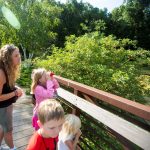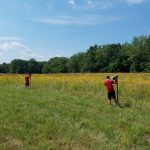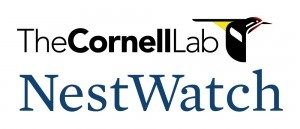Happy citizen science month! In th e midst of the stay-at-home order, one of the things that can help during these times with our children is to get out into nature. With spring in full swing, diving into a citizen science project is a great way to engage kids, learn new things and be a part of a worldwide science project. Here are three that could hone your children’s observation skills and deepen their love of the outdoors: eBird, NestWatch, and iNaturalist.
e midst of the stay-at-home order, one of the things that can help during these times with our children is to get out into nature. With spring in full swing, diving into a citizen science project is a great way to engage kids, learn new things and be a part of a worldwide science project. Here are three that could hone your children’s observation skills and deepen their love of the outdoors: eBird, NestWatch, and iNaturalist.
Spring bird migration is upon us right now! You could have a new-to-you bird in your yard every day! While many of us are staying closer to home, we have a perfect opportunity to work on bird identification skills, because the birds will come to us! The Cornell Lab of Ornithology’s Merlin bird identification app is free and quite user friendly. It will walk you through some identification steps like geographic location, date, size, color and habitat. Once you input where you saw your unknown bird, the app will suggest a list of possible birds it could be. You’ll then be ready to document your backyard birds!
eBird is a citizen science project run by Cornell’s ornithology lab, that allows you to record bird sightings at a location. eBird uses these observations to share information including species range maps, local birding hotspots, and what time of year a species can be found in your location. By recording the birds that you observe in eBird, you can contribute to a worldwide citizen science effort. You just might also wind up developing a lifelong hobby!
It wouldn’t be spring at the Sanctuary without baby birds! If you have visited recently, you will have seen the Canada Goose nests near the shoreline of Wintergreen Lake. Cavity-nesting bird species like Eastern Bluebirds, Tree Swallows, and Black-capped Chickadees  are in nesting season now, too. Some Eastern Bluebirds might be incubating eggs already! NestWatch is another citizen science project run by the Cornell Lab of Ornithology. This project has people monitor a bird’s nesting attempt from nest construction to when the baby birds, or fledglings, leave the nest. The NestWatch website supplies you with all the training you need to monitor a bird’s nest while keeping you and the birds safe. Submit the data you collect through the website or app. It’s a great way to introduce the concept of life cycles to children.
are in nesting season now, too. Some Eastern Bluebirds might be incubating eggs already! NestWatch is another citizen science project run by the Cornell Lab of Ornithology. This project has people monitor a bird’s nesting attempt from nest construction to when the baby birds, or fledglings, leave the nest. The NestWatch website supplies you with all the training you need to monitor a bird’s nest while keeping you and the birds safe. Submit the data you collect through the website or app. It’s a great way to introduce the concept of life cycles to children.
Another way to get out and explore your natural world is to record your observations of plants, insects, reptiles, birds and more in iNaturalist. This citizen science project is a joint effort between the California Academy of Sciences and the National Geographic Society. Submit photos of your observations, hone your identification skills with the help of other naturalists, and then discuss your observations. It’s also a handy way to list all the flora and fauna that you find in your own backyard!
There are many other citizen science projects that you can get involved with depending upon your interests. Check out SciStarter to search for a project by location, age of participant, and interests. Michigan State University even has citizen science projects that would be great with older children. Check out the programs run through Michigan Natural Features Inventory and the Michigan Pollinator Initiative. You don’t have to leave home to be a scientist!




A legacy of conservation; a commitment to sustainability.
Kellogg Bird Sanctuary12685 East C Avenue
Augusta, MI 49012
Phone: (269) 671-2510 birdsanctuary@kbs.msu.edu